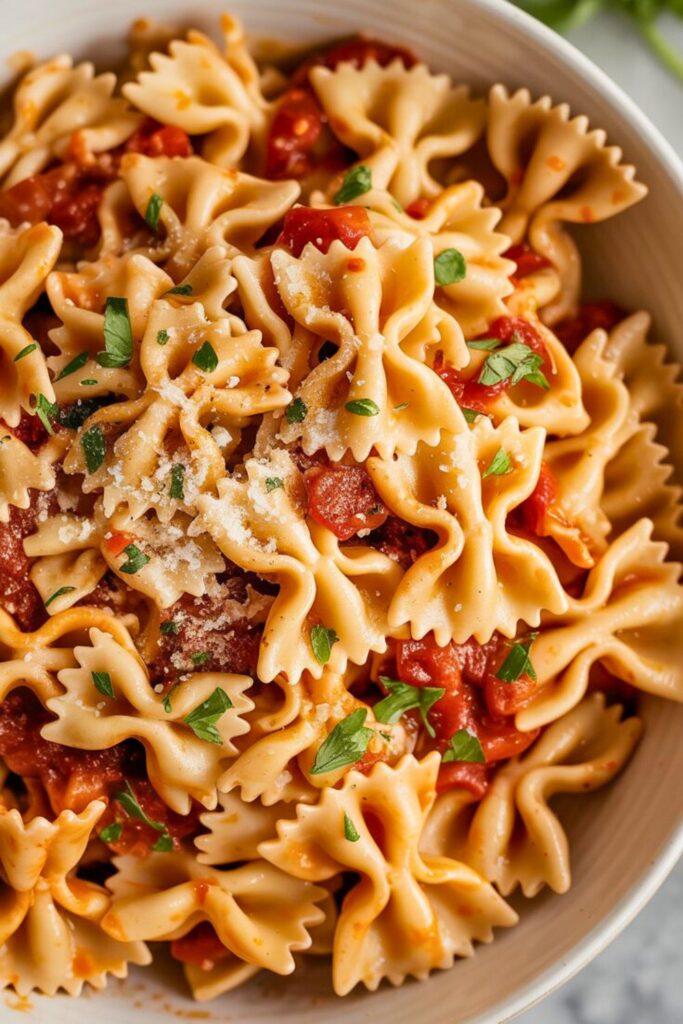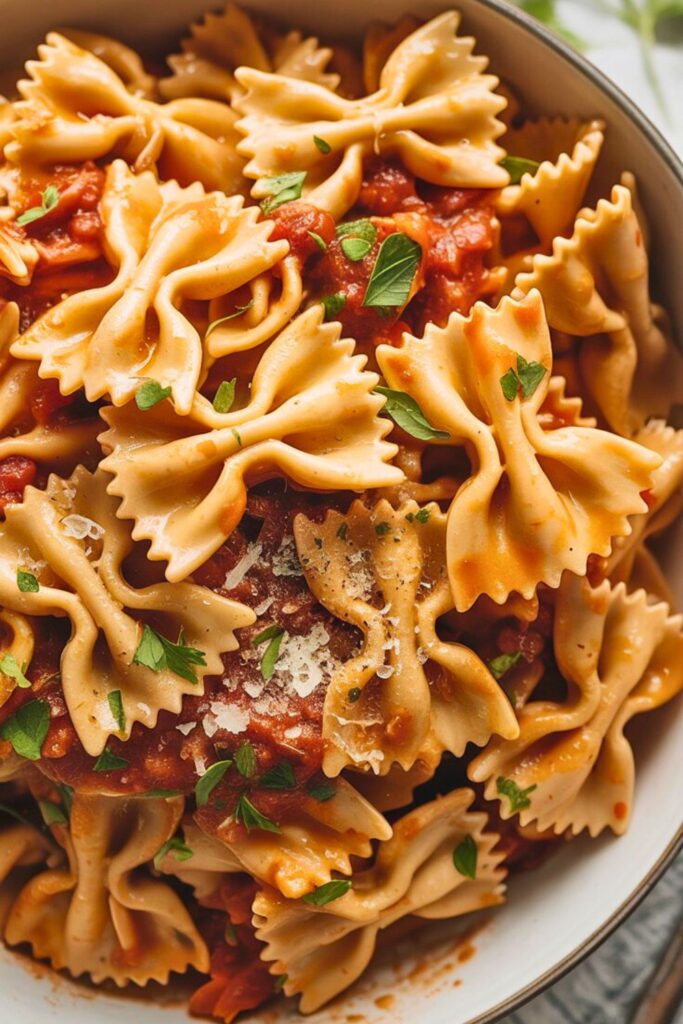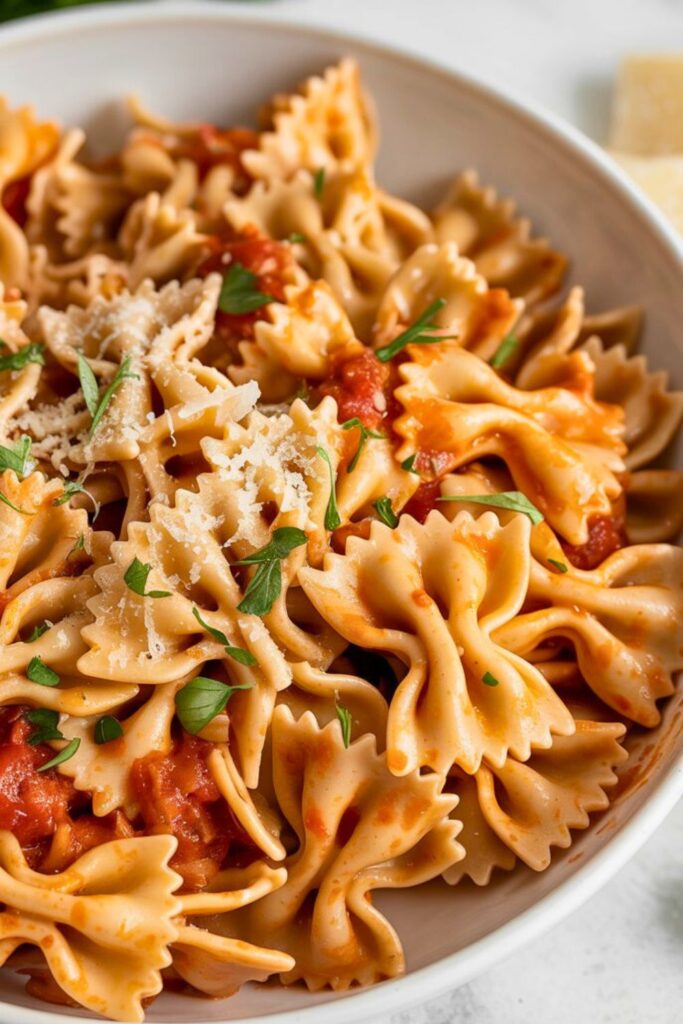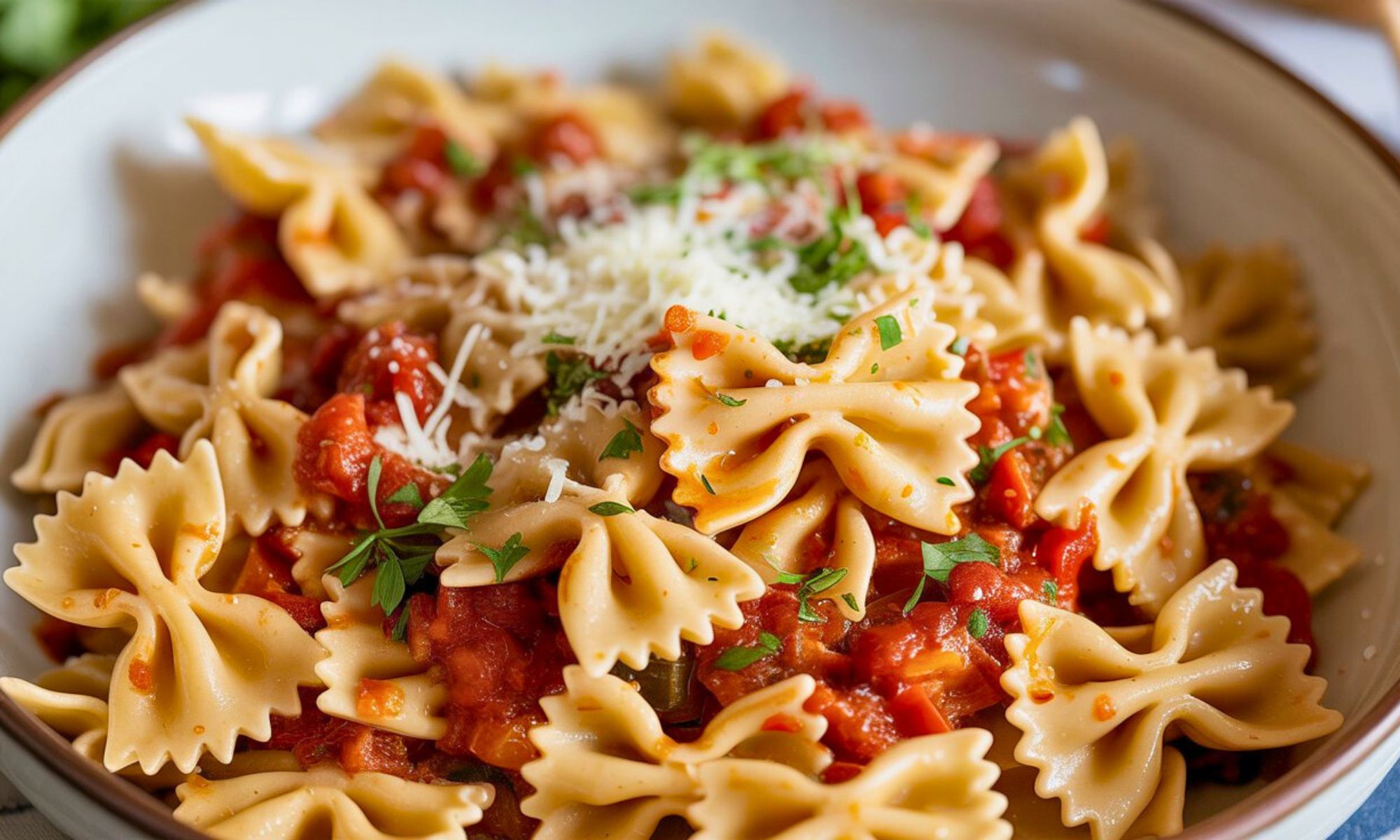Here’s something nobody tells you about Tuesday nights: they’re actually perfect for falling in love with cooking all over again. Most people think you need fancy ingredients or hours of prep to create something magical. Wrong. You need three things: good shallots, decent pasta, and the willingness to let slow caramelization work its magic.
This Spicy Shallot Pasta recipe changed everything for me. It’s the dish that transforms weeknight cooking from chore to celebration. The kind of meal that makes you forget about takeout menus and remember why your kitchen exists in the first place.
This isn’t your typical pasta recipe. It’s what happens when French technique crashes into Italian comfort food, with just enough heat to wake up every taste bud. The result? Pure weeknight gold that looks fancy but comes together faster than most delivery orders.
Why This Spicy Shallot Pasta Deserves Prime Real Estate on Your Recipe List
Let me drop some knowledge about shallots that’ll change how you cook forever. These purple beauties aren’t just bougie onions. They pack more flavor complexity in their small frames than yellow onions ever dreamed of. When you caramelize shallots properly, magic happens.
The transformation is incredible. Raw shallots start sharp and pungent. Fifteen minutes of gentle heat turns them sweet, jammy, and absolutely irresistible. Those golden edges get crispy while the centers stay tender. It’s textural heaven.
This Spicy Shallot Pasta recipe was born from desperation. Empty fridge, hungry family, pantry basics. Sometimes the best dishes come from making something from nothing. That’s when you discover that simple ingredients, treated with respect, create extraordinary results.
The secret lies in the technique. Most people rush the shallots. Big mistake. Low heat and patience create layers of flavor that expensive ingredients can’t buy. Add good chili flakes, quality pasta, and proper cheese? You’ve got restaurant worthy food from everyday staples.
Essential Ingredients for Perfect Spicy Shallot Pasta Success

Here’s your shopping list, organized the way smart cooks actually use ingredients:
The Main Players:
- 1 pound high quality pasta (spaghetti, linguine, or bucatini work perfectly)
- 6-8 large shallots, sliced thin (roughly 2 cups)
- 1/3 cup extra virgin olive oil (invest in good stuff here)
- 2-3 teaspoons red chili flakes (adjust for heat preference)
- 1 cup freshly grated Parmigiano Reggiano, plus extra for serving
- 3 cloves garlic, minced fine
- 1/2 cup dry white wine (cooking wine is trash, use something drinkable)
The Supporting Cast:
- Kosher salt and freshly cracked black pepper
- 2 tablespoons butter (the secret to silky sauce)
- Fresh parsley, roughly chopped
- Lemon zest from one fresh lemon
Smart swaps save the day when specialty ingredients play hide & seek. Can’t find Parmigiano Reggiano? Pecorino Romano brings sharper, saltier notes that complement this Spicy Shallot Pasta beautifully. No shallots available? Yellow onions work, but slice them paper thin and cook them low and slow.
Here’s insider info most recipes skip: chili flake quality matters enormously. Those ancient ones collecting dust since 2015? Toss them immediately. Fresh chili flakes smell fruity and complex, not like cardboard. Store them in your freezer to preserve those precious oils.
The pasta choice affects everything. Bronze die extruded varieties have rougher surfaces that grab sauce better than smooth, machine made versions. Look for brands like Barilla, De Cecco, or Rustichella d’Abruzzo for superior results.
Step by Step Spicy Shallot Pasta Mastery
Step 1: Water Foundation Fill your largest pot with water and salt it generously. The water should taste like mild seawater. This is your only chance to season the pasta directly. Don’t be timid, pasta cooked in under salted water tastes flat no matter what sauce you add.
Step 2: The Shallot Symphony Begins While water heats, slice shallots into 1/8-inch pieces. Consistency matters here. Uneven pieces cook unevenly, creating burnt bits alongside raw centers.
Heat olive oil in your largest skillet over medium low heat. Medium low is crucial, high heat murders perfect shallots before they develop complexity. Add sliced shallots with a pinch of salt. Now comes the hard part: patience.
This takes 15-20 minutes of gentle cooking. You’ll see them gradually turn golden, then deeper brown. Some edges will crisp while centers stay tender. That’s exactly what we want for this Spicy Shallot Pasta. The aroma will drive you crazy in the best way.
Step 3: Building Heat and Flavor Layers Push caramelized shallots to one side of the pan. Add minced garlic to the clear oil space. Let it sizzle for 30 seconds until fragrant, then add chili flakes. Watch the oil turn beautiful red while releasing incredible aromas.
Pro tip: taste the oil carefully with a spoon. Too mild? Add more flakes. Too hot? Add wine early to temper the heat. This is your chance to customize the spice level perfectly.
Step 4: The Pasta Water Dance Drop pasta into boiling water. Cook it one minute less than package directions suggest. We’re finishing it in the sauce, which completes the cooking while building flavor connections.
Before draining, reserve at least one cup of pasta water. This starchy liquid is pure gold for creating silky, restaurant quality sauces. Many home cooks skip this step and wonder why their pasta seems dry.
Step 5: The Marriage of Elements Add wine to the shallot mixture. It’ll bubble dramatically and smell incredible. Cook for 2 minutes to mellow the alcohol sharpness.
Drain pasta and add it directly to the skillet. Start tossing, adding pasta water gradually. You want just enough liquid to coat every strand without creating soup. This is where the magic happens.
Step 6: The Silky Finish Remove pan from heat. Add butter and half the Parmigiano Reggiano. Toss vigorously until everything emulsifies into glossy perfection. This technique, called mantecatura, separates amateur pasta from professional results.
Taste and adjust seasoning. More salt? Black pepper? Additional chili heat? Add lemon zest now, just light grating over everything. It brightens the entire dish without overwhelming the Spicy Shallot Pasta’s carefully built flavors.
The Science Behind Your Spicy Shallot Pasta Success

Understanding the science makes you a better cook. When you slowly caramelize shallots, you’re triggering the Maillard reaction. This process breaks down natural sugars, creating hundreds of new flavor compounds. It’s the same reaction that browns steak or toasts bread.
Temperature control is everything. Too high, and bitter compounds form instead of sweet, complex ones. The sulfur compounds making raw shallots sharp transform into mellow, sweet flavors through proper heat application.
Chili heat comes from capsaicin, which binds to pain receptors. That’s why dairy helps, casein proteins wash capsaicin away. The Parmigiano Reggiano in this Spicy Shallot Pasta doesn’t just taste amazing; it’s scientifically mellowing the heat.
Pasta water’s starch content acts as a natural emulsifier. It helps oil based and water based ingredients blend seamlessly. Restaurant pasta seems silkier because professional cooks understand this principle. Now you do too.
The wine serves multiple purposes. It deglazes caramelized bits from the pan bottom, adds acidity to balance richness, and provides subtle fruit notes that complement the shallots’ sweetness.
Advanced Techniques for Spicy Shallot Pasta Perfection
Master cooks know timing is everything. Start your shallots before the pasta water boils. This ensures both elements finish simultaneously. Cold pasta waiting for hot sauce, or vice versa, kills the dish’s momentum.
Pan size matters more than most realize. Too small, and shallots steam instead of caramelize. Too large, and oil spreads too thin, creating hot spots. Use your largest skillet with high sides, it gives ingredients room to move while containing splatter.
The mantecatura technique requires practice. Remove the pan from direct heat to prevent scrambling the cheese. Add cheese gradually while tossing constantly. The residual heat and pasta water create emulsion, not clumps.
Cheese temperature affects results. Room temperature Parmigiano Reggiano melts smoothly. Cold cheese can shock the sauce, breaking the emulsion you worked hard to create.
Making Your Spicy Shallot Pasta Camera Ready
Presentation elevates simple pasta into something special. Warm your serving bowls first. Hot pasta in cold bowls cools too quickly, affecting both temperature and sauce consistency.
Use tongs to create pasta nests in each bowl. This technique looks professional while ensuring even sauce distribution. Top with reserved crispy shallot bits, they’re gorgeous and add textural interest.
Final garnishing makes the difference. Fresh Parmigiano Reggiano shavings (not grated) look more elegant. A light crack of black pepper adds visual contrast. Few torn parsley leaves provide color without overwhelming the dish.
For photography enthusiasts, natural light showcases the golden shallots beautifully. The caramelized edges catch light in stunning ways. Shoot quickly though, pasta waits for no one.
Perfect Pairings for Your Spicy Shallot Pasta Experience
Wine pairing enhances the entire experience. Crisp whites like Pinot Grigio or Sancerre complement the shallots’ sweetness while their acidity cuts through richness. Red wine lovers should try light options like Chianti or Sangiovese.
Side dishes should provide contrast, not competition. A bitter green salad with lemon vinaigrette offers textural and flavor counterpoint. The acid helps cleanse the palate between bites of rich Spicy Shallot Pasta.
Crusty bread serves practical purposes beyond tradition. It soaks up any sauce clinging to the bowl, ensuring nothing delicious goes to waste. Choose varieties with good crust and open crumb structure.
Troubleshooting Your Spicy Shallot Pasta Adventures
Common mistakes have simple solutions. Burnt shallots usually mean excessive heat. Lower the temperature and start over, there’s no saving bitter, blackened shallots.
Watery sauce indicates insufficient pasta water starch or inadequate reduction. Next time, use less pasta water initially, adding more as needed. Cook wine longer to concentrate flavors.
Clumpy cheese means temperature shock. Remove the pan from heat completely before adding cheese. Toss constantly while adding pasta water to maintain smooth emulsion.
Bland results often stem from under seasoned pasta water or insufficient cheese. Salt the water properly and don’t skimp on Parmigiano Reggiano, it’s not just topping, it’s sauce component.
Creative Variations on the Spicy Shallot Pasta Theme
Once you master the base recipe, variations become playground adventures. Crispy pancetta adds smoky richness that plays beautifully with caramelized shallots. Add it after the shallots caramelize but before the wine.
Vegetarian protein options include toasted pine nuts or crispy chickpeas. Both provide textural contrast and additional flavor layers without overwhelming the Spicy Shallot Pasta’s delicate balance.
Seasonal vegetables extend the recipe’s life. Spring asparagus, summer zucchini, or fall mushrooms all work wonderfully. Add quick cooking vegetables during the final toss. Longer cooking ones need pre cooking.
Herb variations change the entire personality. Fresh thyme pairs beautifully with shallots. Oregano adds Mediterranean flair. Save delicate herbs like basil for final garnishing.
Bringing Your Spicy Shallot Pasta Journey Together

This Spicy Shallot Pasta proves that extraordinary dishes often spring from ordinary ingredients treated with extraordinary care. It’s comfort food with sophistication, weeknight cooking that feels special, proof that technique trumps exotic ingredients every time.
The recipe’s beauty lies in its adaptability. Master the core technique, and endless variations become possible. Add proteins, change herbs, adjust heat levels, make it yours while respecting the fundamental principles.
Most importantly, embrace the process. Cooking should bring joy, not stress. If shallots get darker than intended or you add too many chili flakes, adjust and learn. The best home cooks adapt confidently rather than panic over perfection.
Remember why you started cooking in the first place. It wasn’t about following rules perfectly, it was about creating something delicious for people you care about. This Spicy Shallot Pasta embodies that spirit completely.
Frequently Asked Questions About Spicy Shallot Pasta
Can I prep this Spicy Shallot Pasta ahead of time?
Fresh pasta always beats reheated versions, but life demands compromises sometimes. Caramelize shallots earlier in the day and refrigerate them. Reheat gently with oil before adding wine. Always cook pasta fresh though, reheated pasta never quite recovers its original texture.
What if my heat tolerance is lower than expected?
Start with half a teaspoon of chili flakes and taste carefully. You can add more easily, but removal is impossible. The butter and cheese naturally mellow heat, so don’t skip those components. If you accidentally overdo it, extra pasta water or splash of cream helps calm things down.
Does pasta shape really matter for this recipe?
Shape affects sauce adherence significantly. Long, thin varieties like spaghetti or linguine work best because they tangle with caramelized shallots beautifully. Avoid short pasta shapes, they don’t integrate as well with this style of sauce.
Why do my shallots burn instead of caramelize properly?
Heat control determines success or failure here. Burning indicates excessive temperature. Use medium low heat consistently and exercise patience. Good caramelization takes 15-20 minutes minimum. If they darken too quickly, add wine splash to deglaze and slow the process.
Can I make this Spicy Shallot Pasta vegetarian?
It’s already vegetarian! The recipe contains no meat products. For vegan adaptation, substitute nutritional yeast for Parmigiano Reggiano and use olive oil instead of butter. The results won’t be identical, but they’ll still be delicious.

Swiftly Captions by Tina Smith — Quick, flavorful food recipes made simple, bringing fresh inspiration to your kitchen every day






